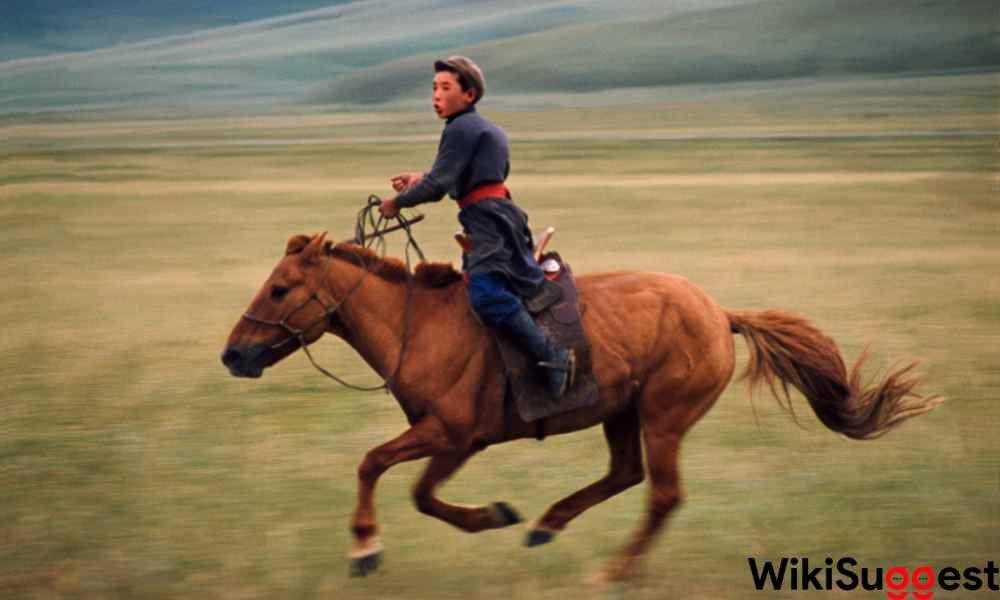Worlds Knowledge in Your Pocket.
"Share your knowledge. It is a way to achieve immortality." by Dalai Lama
Worlds Knowledge in Your Pocket.
"Share your knowledge. It is a way to achieve immortality." by Dalai Lama

The stirrup is one of the most important inventions in history. It was a simple device, really just a strap of leather looped around the saddle and attached to the horse’s girth. But it had dramatic implications for both warfare and society at large. The invention of the stirrup allowed riders to stay in the saddle for long periods and gave them more control over their horses. This invention revolutionized warfare and led to the development of cavalry units that could quickly move across the battlefield.
There are many different types of horsemanship, each with its own unique set of skills. Some of the most popular types include dressage, jumping, and eventing.
Dressage is a French word that means “training.” It is a method of riding and training horses that emphasizes correct posture and movement. It is often compared to ballet, and it is a popular sport in Europe.
Jumping is a type of horsemanship that focuses on jumping over obstacles. It is a popular sport in both Europe and North America. Jumping horses are specially bred and trained to compete in this demanding sport.
Eventing is a type of horsemanship that combines dressage, jumping, and cross-country riding. It is a demanding sport that tests the skills of both horse and rider. Eventing is popular in Europe and North America.
Obedience is a type of horsemanship that focuses on teaching horses to respond to commands. It is sometimes used in law enforcement and military applications. There are many other types of horsemanship, including barrel racing, polo, and rodeo. Each type of horsemanship has its own unique set of skills and techniques.
Horsemanship provides many benefits for both horse and rider. It helps to build a bond between horse and rider, and it gives riders the skills they need to care for their horses. Horsemanship also helps riders to develop strength, balance, and coordination.
It is important to note that horsemanship should only be attempted by those who are experienced and qualified. It can be dangerous for both horse and rider if it is not done correctly.
The stirrup was invented many centuries before horsemanship. It was invented by the Chinese in the 4th century AD, but it wasn’t introduced to Europe until the 8th century. The earliest evidence of stirrups in Europe comes from a carving in the church of San Ambrogio in Milan, Italy. This carving shows two mounted soldiers, each with one foot in a stirrup.
The use of stirrups quickly spread throughout Europe and Asia. By the 12th century, they were an essential part of cavalry warfare. The Mongols were particularly adept at using cavalry, and their success in battle was due in large part to the stirrup. The Mongols used a type of saddle that allowed them to fire arrows while mounted, and this gave them a decisive advantage over their enemies.
The stirrup had such a profound impact on warfare that it is often called the “weapon of the knights.” It allowed knights to charge into battle with much greater force, and it gave them a decided advantage over infantry units.
Horsemanship is an ancient art, with evidence of its existence dating back to the Bronze Age. The first stirrup-like devices were used in China during the Han Dynasty, over two thousand years ago. However, it is unknown when or how these devices made their way to Europe. It is possible that they were introduced by the Huns, who invaded Europe in the 4th century AD.
The word “horsemanship” comes from the Old English word “hors,” which means horse, and the word “man,” which means skill. Horsemanship is the art of riding and caring for horses. It encompasses a wide range of skills, including dressage, jumping, and eventing.
Horsemanship became increasingly important in warfare as the use of cavalry units spread throughout Europe and Asia. Cavalry units were first used by the Persians, and they quickly became a staple of ancient warfare. The stirrup made cavalry units even more effective, and they played a significant role in the success of many armies.
Cavalry units were particularly important during the middle Ages. During this time, knights were the elite fighting force of most armies. The combination of Armour and horses made knights virtually unstoppable on the battlefield.
The history of the horse and the origins of horsemanship are closely intertwined. The stirrup was a key invention that made horsemanship possible, and it had a profound impact on the way wars were fought. Horsemanship has been an important part of warfare for centuries, and it continues to play a significant role in militaries around the world.
The stirrup was a key invention that made horsemanship possible, and it had a profound impact on the way wars were fought. Horsemanship has been an important part of warfare for centuries, and it continues to play a significant role in militaries around the world. There are many different types of horsemanship, each with its own unique set of skills. Some of the most popular types include dressage, jumping, and eventing. Horsemanship provides many benefits for both horse and rider. It helps to build a bond between horse and rider, and it gives riders the skills they need to care for their horses. Horsemanship also helps riders to develop strength, balance, and coordination.
Also Read: Which Statement Describes a Key Effect of Technology?